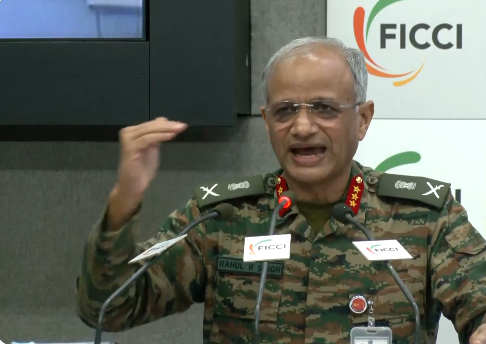In a significant revelation underscoring emerging regional threats, Lieutenant General Rahul R Singh, Deputy Chief of the Indian Army (Capability Development and Sustenance), disclosed that China provided real-time intelligence to Pakistan during India’s precision military operation—Operation Sindoor. The announcement was made during the ‘New Age Military Technologies’ conclave organized by FICCI, where the senior military leader outlined the operational complexities and strategic lessons learned from the mission.
India had launched Operation Sindoor in retaliation for the brutal terrorist attack in Pahalgam, which claimed the lives of 26 civilians. The Resistance Front (TRF), a known proxy of Lashkar-e-Taiba operating out of Pakistan, had claimed responsibility for the attack. In response, India carried out a tri-services offensive targeting terror infrastructure in Pakistan and Pakistan-occupied Kashmir (PoK).
Lt Gen Singh stated that during the military build-up, Pakistan’s military had access to precise and real-time inputs about Indian troop movements—information that was being fed directly by China. “When DGMO-level talks were underway, the Pakistani side made specific references to Indian force deployments, revealing that they were receiving live updates from China. This is a serious concern that demands urgent strategic countermeasures,” he emphasized.
Singh further described the evolving nature of threats faced by India, saying the country was up against “three adversaries” during the operation—Pakistan at the front, China as an enabler, and Turkey, which provided key drone technology. “81% of Pakistan’s military hardware is Chinese. This gives Beijing a live laboratory to test its systems against Indian defense platforms,” he said. He also confirmed that Turkey’s contribution came in the form of combat drones, including the Bayraktar, which had been spotted in the conflict zone.
The Deputy Army Chief warned that future conflicts could see Pakistan deliberately targeting Indian civilian centers—a tactic that was avoided in the recent standoff but remains a clear possibility. “This time, our population centers were not targeted, but that might not be the case in future engagements. We need robust air defense systems in place,” he said.
On operational planning, Singh shared that intelligence—both technological and human—played a crucial role in the identification of 21 high-value targets. Out of these, nine were eventually engaged after a tri-services consensus was reached. “It was only in the final hours that the decision was made to strike those nine targets. The objective was not only punitive but strategic—to convey clear intent and capability,” he said.
He praised the Indian leadership’s decision to halt the operation once objectives were achieved, calling it a “masterly stroke.” The ceasefire, which followed soon after, was portrayed as a well-timed diplomatic and military maneuver. “War is easy to start but extremely difficult to control. Once our goals were met, we ensured a calculated de-escalation,” he noted.
Lt Gen Singh concluded by stating that India’s current doctrine allows for no leniency in the face of aggression. “There is no scope of absorbing pain the way we did in the past. We will respond with punitive action if provoked.”
Operation Sindoor marks a turning point in India’s strategic posture, revealing a shifting battlefield where conventional threats are now augmented by real-time intelligence warfare, drone strikes, and international collaborations between adversaries.








